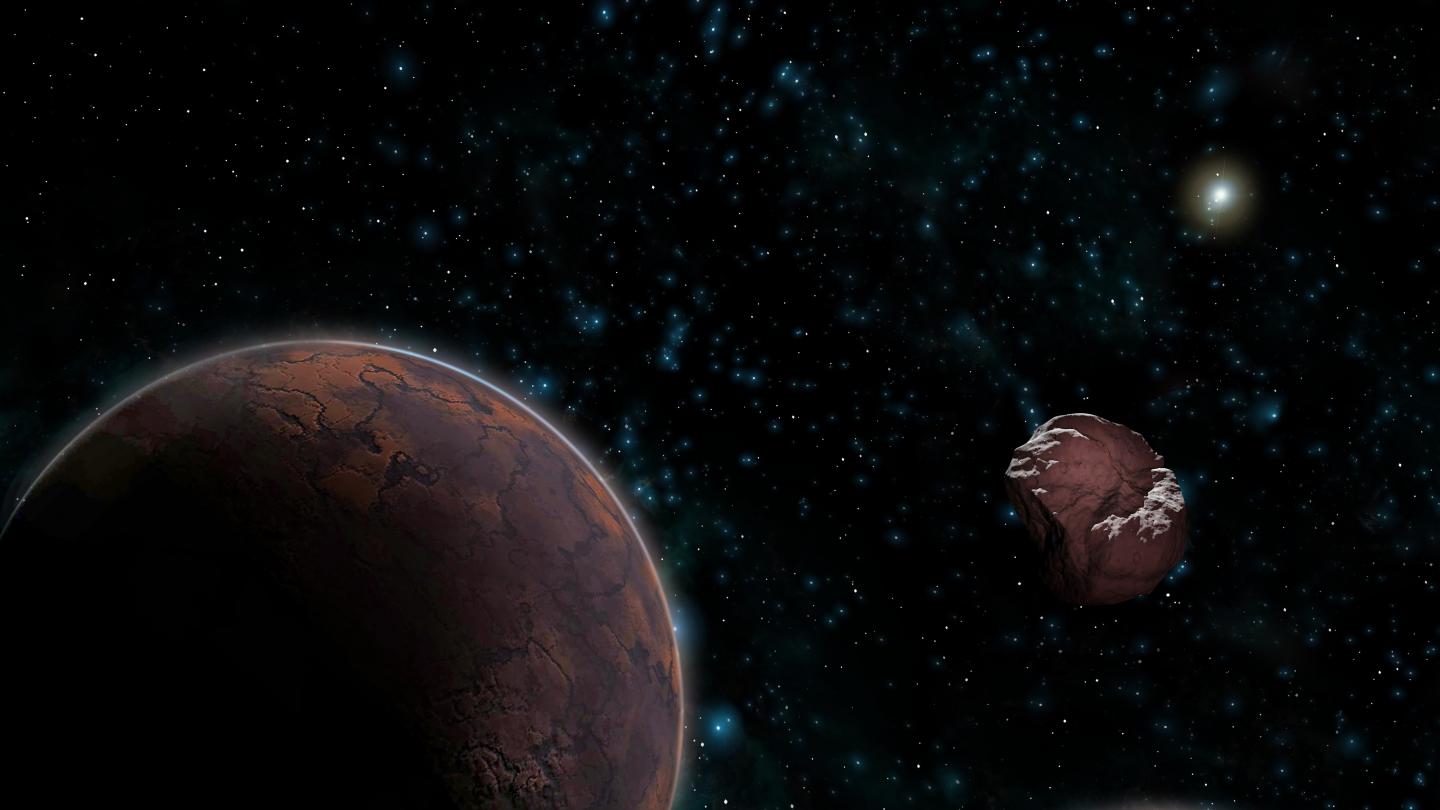In the race towards the discovery of another planet in our solar system, the ninth or tenth depending on how seriously you take the 2 percent of astronomers who demoted Pluto, scientists are striving to calculate its potential orbit using the tracks left by the small bodies that move well beyond Neptune. And the calculations may mean even more than 10 exist.
New calculations confirm that the orbits of the six extreme trans-Neptunian objects that served as a reference to announce the existence of Planet Nine are not as stable as it was thought.
What changed so fast? Earlier this year, astronomers K. Batygin and M. Brown from the California Institute of Technology announced that they had found evidence of the existence of a giant planet with a mass ten times larger than Earth's in the confines of the Solar System. Moving in an unusually elongated orbit, the mysterious planet will take between 10,000 and 20,000 years to complete one revolution around the Sun.
But the media hype left out that it was just based on computer simulations, and they used input data based on the orbits of six extreme trans-Neptunian objects (ETNOs). Specifically, these ETNOs are: Sedna, 2012 VP113, 2004 VN112, 2007 TG422, 2013 RF98 and 2010 GB174.

Assuming that is true, how would the orbits of these six ETNOs evolve if a Planet Nine such as the one proposed by K. Batygin and M. Brown really did exist?
"With the orbit indicated by the Caltech astronomers for Planet Nine, our calculations show that the six ETNOs, which they consider to be the Rosetta Stone in the solution to this mystery, would move in lengthy, unstable orbits," warn brothers Carlos and Raúl de la Fuente Marcos, two freelance Spanish astronomers, and paid scientist Sverre J. Aarseth from the Institute of Astronomy in Monthly Notices of the Royal Astronomical Society (MNRAS). "These objects would escape from the Solar System in less than 1.5 billion years, -he adds-, and in the case of 2004 VN112, 2007 TG422 and 2013 RF98 they could abandon it in less than 300 million years; what is more important, their orbits would become really unstable in just 10 million years, a really short amount of time in astronomical terms."
According to this new study, also based on numerical (N-body) simulations, the orbit of the new planet proposed by Batygin and Brown would have to be modified slightly so that the orbits of the six ETNOs analyzed would be really stable for a long time.
These results also lead to a new question: Are the ETNOs a transient and unstable population or, on the contrary, are they permanent and stable? The fact that these objects behave in one way or another affects the evolution of their orbits and also the numerical modeling.
"If the ETNOs are transient, they are being continuously ejected and must have a stable source located beyond 1,000 astronomical units (in the Oort cloud) where they come from", notes Carlos de la Fuente Marcos. "But if they are stable in the long term, then there could be many in similar orbits although we have not observed them yet".
In any case, the statistical and numerical evidence obtained by the authors leads them to suggest that the most stable scenario is one in which there is not just one planet, but rather several more beyond Pluto, in mutual resonance, which best explains the results. "That is to say we believe that in addition to a Planet Nine, there could also be a Planet Ten and even more," the Spanish astronomer points out.
Is there a Planet Nine or 10?
Various groups are attempting to be the first to compute the position of the hypothetical Planet Nine in order to then observe it. This situation is reminiscent of the discovery of Neptune, in which the French mathematician Urbain Le Verrier was the first to "discover" a new planet using laborious hand calculations based on the positions of Uranus; later, the German astronomer J. G Galle directly observed it.
"If Neptune was the first planet discovered using pen and paper, Planet Nine could be the first to be discovered using entirely computerized numerical calculations." notes de la Fuente Marcos.
Could Planet Nine be an exoplanet?
Probably not. Computational simulations raised the idea that Planet Nine may have come from outside the Solar System, that is to say, that it could be an exoplanet. Their hypothesis is that around 4.5 billion years ago, our then young Sun "stole" this planet from a neighboring star with the help of a series of favorable conditions (proximity of stars within a star cluster, a planet in a wide and elongated orbit).
Other scientists believe that this scenario is improbable. The results are based on residuals in the tracking data from the Cassini spacecraft, in orbit around Saturn, caused by the presence of the hypothetical planet, but NASA has denied it, suggesting that it could simply be statistical noise in the signal.





Comments